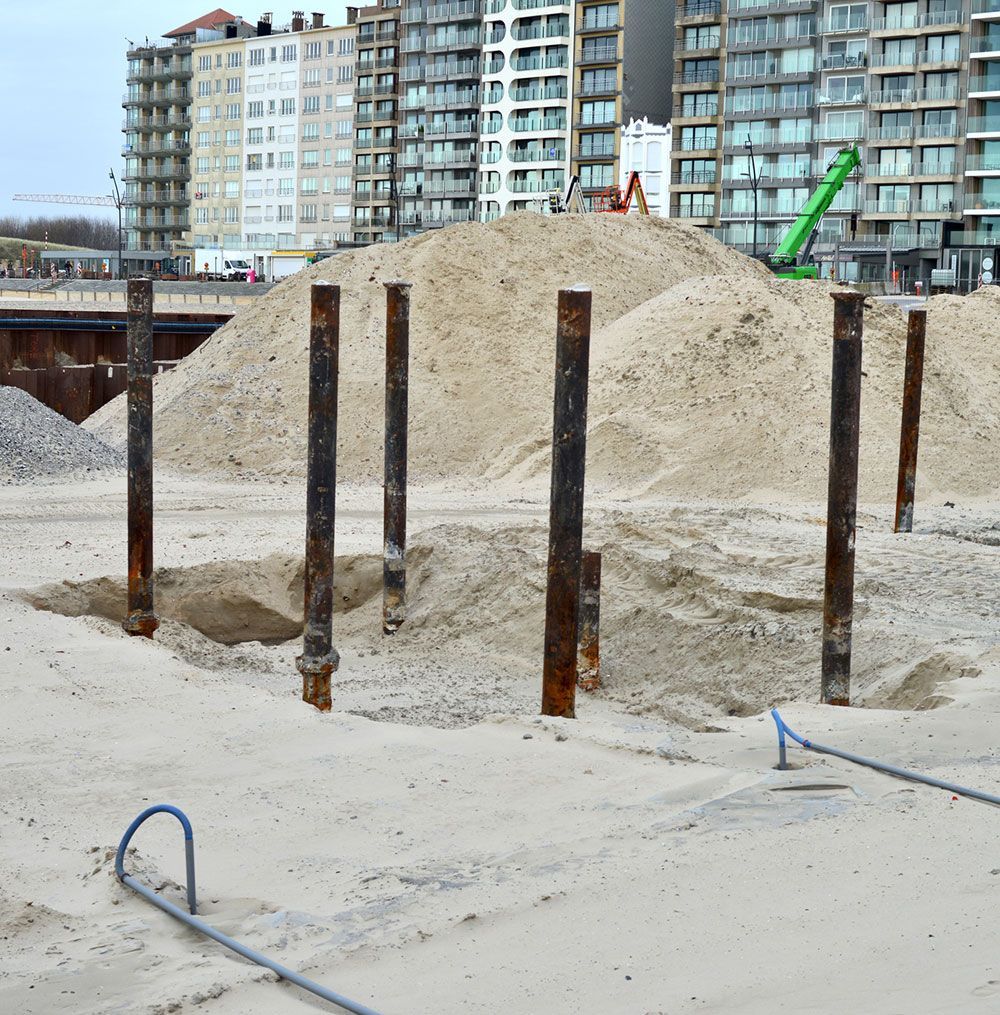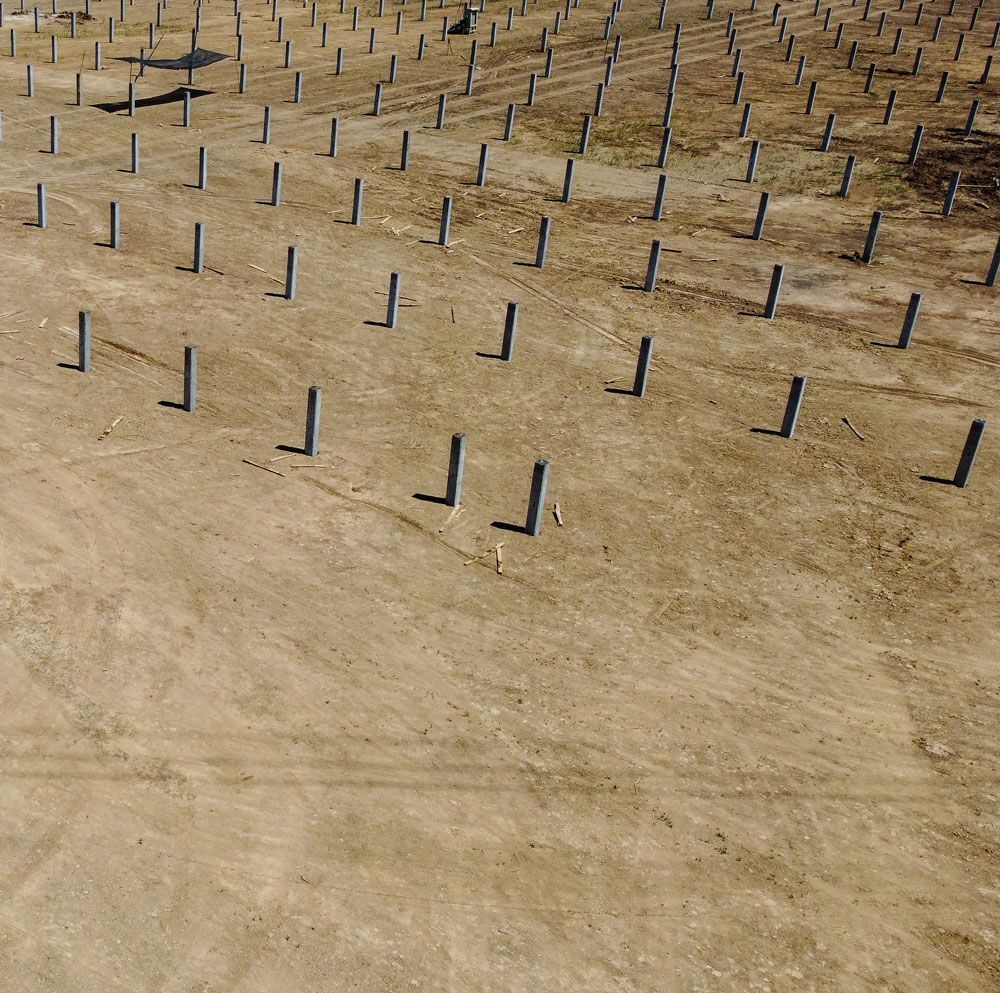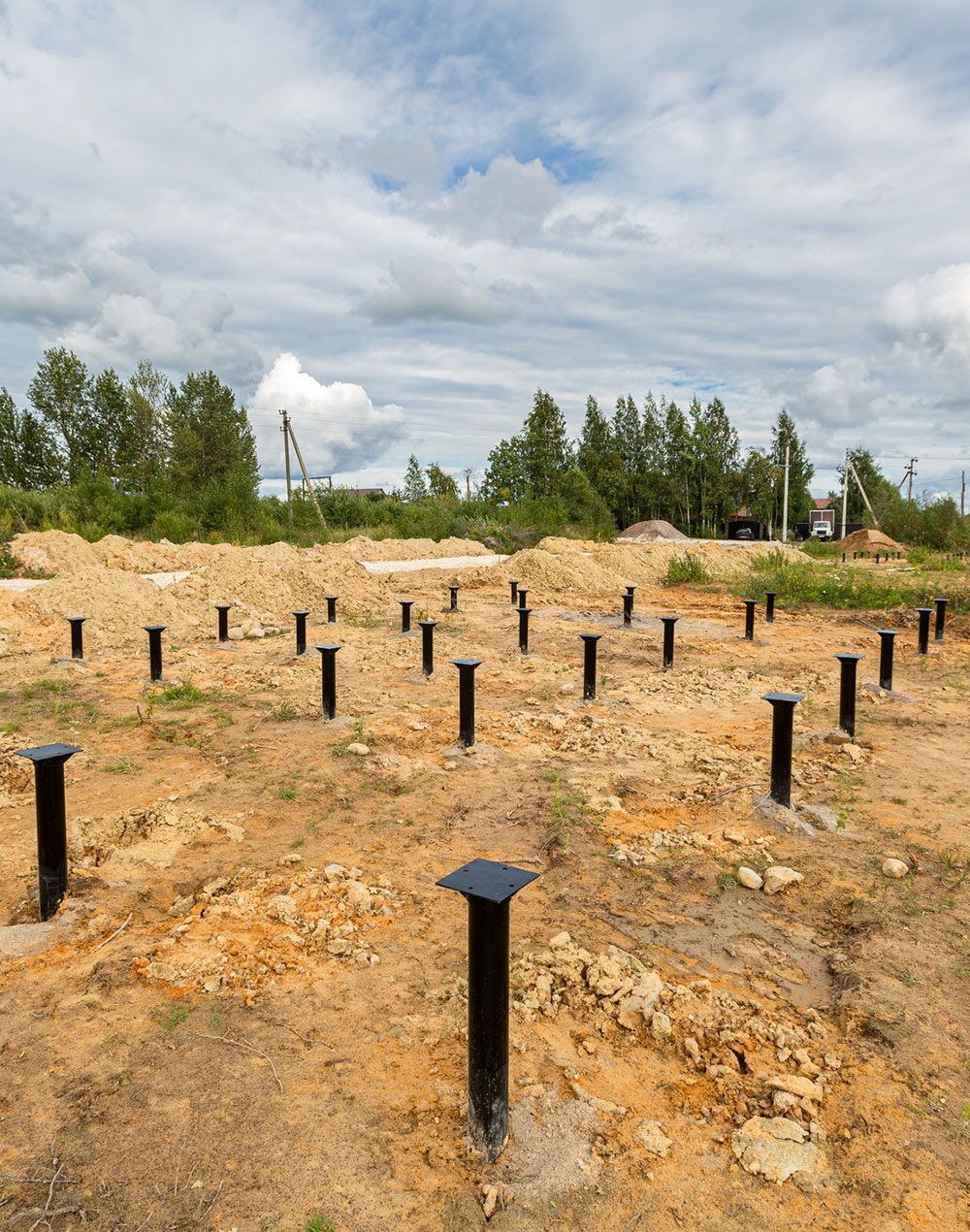Helical Pier Foundations for the
Energy Sector
"Helicals are Estimated to Reduce Your Carbon Footprint by over 98.5%"
The History of Helical Piers
Helical piers, also known as helical piles, helical anchors, or screw piles, have a fascinating history that dates back several centuries. The concept of helical piers emerged from various engineering and construction practices around the world.
Helical foundations can be traced back to the mid-19th century. Alexander Mitchell, an Irish civil engineer, is often credited with the development of the screw-pile foundation. In 1833, he patented a screw-pile lighthouse foundation design, which was used for constructing lighthouses and other structures in soft, marshy ground or underwater sites.
Throughout the 19th and early 20th centuries, screw piles became one of the most popular ways of constructing lighthouses, bridges, and piers in coastal regions, especially in places with poor soil conditions. These early helical piers were manually screwed into the ground using various methods, often with the help of human or animal labor.
In the 1950s and 1960s, technological advancements led to the development of more efficient helical pier designs and installation methods. Engineers began using hydraulic machinery to install helical piers, making the process quicker and more reliable.
Helical piers started gaining traction in the civil engineering and construction industries during the late 20th century. Their applications expanded to include various types of structures such as buildings, bridges, communication towers, and transportation infrastructure.
With advancements in materials science, manufacturing techniques, and engineering design, helical piers have become a versatile and widely used foundation solution. Today, helical piers are commonly made of steel and are designed to withstand specific load requirements based on the project's needs. They offer several advantages over traditional foundation methods, such as faster installation, reduced site disruption, lower environmental impact, and the ability to bear heavy loads in various soil conditions. These benefits have contributed to their growing popularity in the construction industry.
Today, helical piers continue to find applications in both residential and commercial construction projects. They are often used for underpinning existing structures, supporting foundations in environmentally sensitive areas, and stabilizing structures in regions prone to seismic activity or soil subsidence.

Slide title
Write your caption hereButton
Slide title
Write your caption hereButton
Slide title
Write your caption hereButton
Why Helical Pier Foundations Are Better Than Concrete Foundations
Helical piers offer several advantages over traditional concrete foundations, making them an increasingly popular choice for various construction projects.
● Ease of Installation: Helical piers can be installed quickly and efficiently using hydraulic machinery, which significantly reduces construction time and labor costs. In contrast, concrete foundations require extensive excavation, formwork, and curing time, leading to a longer construction period.
●
Minimal Site Disturbance: Helical piers are screw-like steel shafts that are screwed into the ground, eliminating the need for large excavation and heavy equipment. This results in less disruption to the surrounding environment and a smaller construction footprint, making them ideal for projects in environmentally sensitive areas or sites with limited access.
● Versatility: Helical piers can be installed in various soil conditions, including rocky or sandy soils, as well as in areas prone to high water tables. Their design allows them to bear different loads and adapt to a wide range of building types, making them suitable for residential, commercial, industrial, and infrastructure projects.
● Immediate Load Capacity: Once installed, helical piers can immediately support the load of the structure, as they don't require any curing time like concrete foundations. This can be especially beneficial for projects that have time constraints or where construction needs to proceed quickly.
● Potential for Removal & Reuse: Unlike concrete foundations, helical piers can be removed and reused if necessary. This feature can be advantageous for temporary structures, such as modular buildings, or in situations where the foundation needs to be relocated.
● Predictable Performance: Helical piers are designed and tested to meet specific load requirements, providing a more predictable foundation system. On the other hand, the quality and strength of concrete foundations can be influenced by various factors during pouring and curing, leading to potential inconsistencies.
● Cost-Effectiveness: While the upfront cost of helical piers may be higher than that of concrete foundations, their ease of installation and reduced construction time often result in overall cost savings. Additionally, the reduced site disturbance and minimized environmental impact may lead to lower regulatory and permitting costs.
● No Need for Concrete Mixing or Disposal: Concrete foundations require the mixing of cement, sand, and aggregates, which can be messy and labor-intensive. Helical piers eliminate the need for concrete, reducing waste and the associated environmental impact.
If you’re ready to use helical piers on your next construction or oilfield project, turn to the experts: CAPRA Energy Solutions. We would be happy to show you how helical piers can benefit your next project.
Contact us today to get started.

